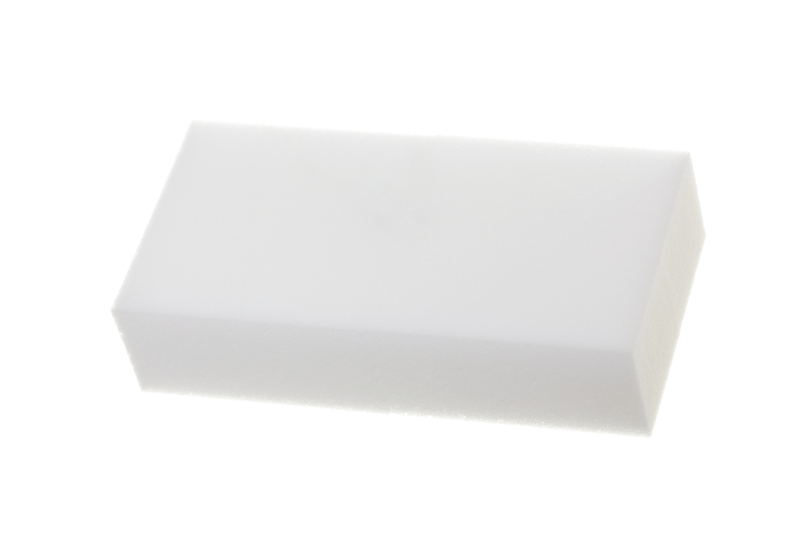Essential Jewelry Cleaning Techniques
Posted on 05/09/2025
Essential Jewelry Cleaning Techniques: Expert Guide
Jewelry not only accentuates personal style, but often holds special sentimental value. Whether it's a sparkling diamond engagement ring, a treasured family heirloom, or your favorite pair of gold earrings, regular and proper cleaning is vital for preserving luster and extending lifespan. In this comprehensive guide, discover the most essential jewelry cleaning techniques for different materials and settings, and learn how to keep your precious pieces looking flawless at home.

Why Is Jewelry Cleaning So Important?
Proper jewelry cleaning means more than just surface shine. Over time, jewelry accumulates dirt, oil, sweat, lotions, and even chemicals from daily exposure. Without consistent care, gemstones can lose their brilliance, metals may tarnish, and buildup can weaken prongs and settings, causing more serious damage or even loss of stones. Adopting jewelry cleaning methods is a fundamental part of responsible jewelry ownership and maintenance.
How Often Should You Clean Your Jewelry?
The frequency depends on how often you wear the jewelry and the type of materials. Diamonds and hard stones benefit from monthly cleaning, while softer gems and pearls may only require seasonal care. For pieces worn daily, such as wedding bands, consider a gentle cleaning routine every few weeks. Always inspect for loose stones or damaged settings before and after cleaning.
General Considerations Before Cleaning Jewelry
- Know your materials: Gold, silver, platinum, diamonds, colored stones, pearls, and costume jewelry all have different care requirements.
- Check for damage: Never clean jewelry with loose stones, bent prongs, or cracked settings; get them repaired first.
- Read care instructions: Some gemstones and metals can be damaged by cleaners, hot water, or even ultrasonic machines.
- Avoid harsh chemicals: Bleach, ammonia, or acetone can ruin delicate jewelry finishes.
Essential At-Home Jewelry Cleaning Techniques
Mastering essential jewelry cleaning methods at home can keep your pieces sparkling without expensive professional care. Here's a breakdown of the best DIY jewelry cleaning techniques for popular materials.
1. Cleaning Gold Jewelry
-
Warm Water and Mild Soap:
- Mix a few drops of mild dish soap in a bowl of lukewarm water.
- Soak gold jewelry for 10-15 minutes.
- Brush gently with a soft-bristled toothbrush, focusing on crevices.
- Rinse thoroughly under clean water and pat dry with a soft cloth.
- Polishing Cloth: Use a non-abrasive jewelry polishing cloth to restore brilliance and remove tarnish from solid gold pieces.
2. Cleaning Silver Jewelry
-
Baking Soda Paste:
- Create a paste with baking soda and water.
- Apply with a soft cloth or toothbrush and rub gently.
- Rinse thoroughly, then dry with a lint-free towel.
-
Aluminum Foil Soak:
- Line a bowl with foil, shiny side up. Add 1 tablespoon baking soda and boiling water.
- Place silver jewelry in the solution. Wait a few minutes for tarnish to transfer to the foil. Rinse and dry.
- Avoid silver dips for delicate or antique pieces.
3. Cleaning Diamond Jewelry
-
Ammonia Solution:
- Mix one part ammonia with six parts water.
- Soak diamond jewelry for 15 minutes. Gently brush, rinse, and dry.
- Caution: Only use on diamonds set in gold or platinum--never with pearls or colored gems.
- Dish Soap and Water: Ideal for regular diamond care without harsh chemicals.
4. Cleaning Gemstone Jewelry
-
Mild Soapy Water:
- Use only mild soap and lukewarm water for most colored stones (sapphires, emeralds, rubies).
- Soak and brush gently, as many colored gems can be soft or porous.
- Dry with a soft, clean cloth.
- Avoid soaking opals, turquoise, and other porous stones. For these, gently wipe with a damp cloth only.
5. Cleaning Pearl Jewelry
-
Damp Cloth Method:
- Never soak pearls. Instead, use a clean, damp cloth to gently wipe each pearl.
- Allow strands to air dry flat before storing.
- Avoid exposure to chemicals, sweat, and perfumes.
- Restring pearls if you notice dirt build-up or frayed threading.
6. Cleaning Costume Jewelry
- Gentle Wipe: Since faux stones and plated metals can be damaged by liquids, use a soft, dry cloth or slightly damp cloth for surface cleaning.
- Avoid Soaking: Never immerse costume pieces in water, as adhesives can dissolve.
Advanced Jewelry Cleaning Methods
Ultrasonic Cleaners
-
Ultrasonic cleaners use sound waves to dislodge dirt. They're effective for hard stones and precious metals but should not be used with pearls, opals, emeralds, or vintage jewelry.
Always read manufacturer instructions and consult a jeweler before using.
Professional Deep Cleaning
- For intricate, fragile, or high-value jewelry, periodic cleaning by a professional jeweler guarantees both safety and optimum shine. Jewelers perform steam cleaning, detailed inspection, and secure any loose stones.
Dos and Don'ts of Jewelry Cleaning
- Do use a soft brush for intricate settings.
- Don't use toothpaste or baking soda on soft stones or plated jewelry.
- Do rinse jewelry thoroughly to prevent residue buildup.
- Don't clean jewelry over an open drain.
- Do store cleaned jewelry in a soft pouch or lined box.
- Don't expose jewelry to chlorine, bleach, or abrasive cleaners.
Common Mistakes to Avoid in Jewelry Cleaning
- Using hot or boiling water on stones that can crack with thermal shock (like opals, tanzanite, or pearls).
- Scrubbing with abrasive brushes that cause micro-scratches on softer metals and gems.
- Neglecting regular inspections leading to unseen damage or loss of stones.
- Attempting chemical dips on items with glued components or enamel.
How to Store Cleaned Jewelry Properly
Proper storage complements essential jewelry cleaning techniques. After cleaning, always:
- Dry completely before storing.
- Store each piece separately in a fabric-lined box or soft pouch to prevent scratching and tarnishing.
- Keep jewelry away from sunlight, humidity, and extreme temperatures.
- Place anti-tarnish strips with silver jewelry.
Natural and Eco-Friendly Jewelry Cleaning Tips
- Baking Soda Paste: Great for removing tarnish from pure silver and gold. Avoid on delicate stones.
- White Vinegar Solution: Mix white vinegar and water for eco-friendly metal cleaning. Rinse well.
- Lemon Water: Use diluted lemon juice sparingly for metals only; it's too harsh for stones.
- Steam: Briefly steaming solid gold, platinum, or diamond pieces (never pearls or porous gems) lifts grime naturally.
Always spot test before using natural cleansers on valuable or antique jewelry.
Expert Answers to Frequently Asked Jewelry Cleaning Questions
-
Can I use toothpaste to clean my jewelry?
Toothpaste is abrasive and can scratch metals and most gems. Avoid this popular myth and opt for a mild soap solution instead. -
How do I clean jewelry with intricate settings?
Use a soft baby toothbrush or mascara wand and reach every crevice gently. A can of compressed air can help dislodge trapped dust. -
Are store-bought jewelry cleaners safe?
Most commercial cleaners are effective but read the label for metal and stone compatibility. Always follow manufacturer directions. -
Is it safe to clean jewelry with vinegar or baking soda?
These ingredients work well for unplated metals, but can damage softer gems. Research your piece's materials before using home remedies.
When to Seek Professional Jewelry Cleaning Services
If your jewelry is antique, features delicate filigree, or holds high monetary or sentimental value, it's wise to consult a jeweler for cleaning and inspection at least once per year. Professionals have specialized equipment and experience to clean, restore, and secure complex pieces without risk of damage.

Simple Routine Care Tips for Long-Lasting Jewelry Shine
- Remove jewelry before exercising, swimming, or using household cleaners.
- Wipe pieces with a lint-free cloth after each wear to remove oils.
- Avoid spraying perfume or hair spray directly onto jewelry.
- Schedule an annual professional check for important pieces.
In Conclusion: The Importance of Essential Jewelry Cleaning Techniques
Investing in a regular cleaning routine not only keeps your jewelry gleaming, but also protects your treasured investment for future generations. By understanding the best essential jewelry cleaning techniques for each material, you can safely shine up your collection at home, avoid common pitfalls, and know when it's time to consult a professional. For lasting brilliance and value, make jewelry cleaning part of your care routine--your gems will thank you!
Ready to give your jewelry the care it deserves? Explore these techniques and enjoy dazzling results every time you wear your favorite pieces.




